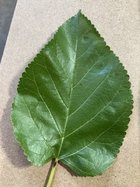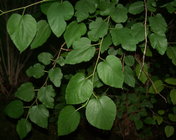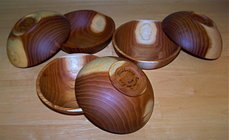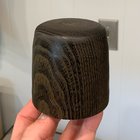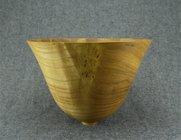-
December 2025 Turning Challenge: Single Tree! (click here for details) -
Congratulations to Bob Henrickson, People's Choice in the November 2025 Turning Challenge (click here for details) -
Congratulations to Guillaume Fontaine for "Old Tea Pot" being selected as Turning of the Week for December 15, 2025 (click here for details) -
Welcome new registering member. Your username must be your real First and Last name (for example: John Doe). "Screen names" and "handles" are not allowed and your registration will be deleted if you don't use your real name. Also, do not use all caps nor all lower case.
You are using an out of date browser. It may not display this or other websites correctly.
You should upgrade or use an alternative browser.
You should upgrade or use an alternative browser.
Anyone know what kind of tree?
- Thread starter Norm Marentette
- Start date
According to PictureThis it's Mulberry.
This leaf does look like it could be mulberry, see definition attached.
Veins radiate from the stem with serrated edges on glossy green leaves. There is no uniform shape, and the lobes are unbalanced.
The black mulberry has a short heart-shaped leaf. The red mulberry has rough leaves with pointed lobes.
How To Identify Mulberry Leaves
Mulberry leaves are staggered in an alternate pattern along a branch. They are rarely symmetrical with oval two lobes or fleur-de-lys like three lobes.Veins radiate from the stem with serrated edges on glossy green leaves. There is no uniform shape, and the lobes are unbalanced.
The black mulberry has a short heart-shaped leaf. The red mulberry has rough leaves with pointed lobes.
The mulberry that I have turned is very yellow but will turn a very deep brown when exposed to UV.
Last edited:
Thanks everyone for the information. Leo great set of salad bowls! Bob thanks on explaining the color change, great to know.
What does that mean?I let a piece of Black Locust fume overnight
I just meant that I ammonia fumed this piece of wood overnight. I put some 10% ammonia in a glass dish, and suspended the piece of wood over the ammonia. The ammonia vapor (fumes) reacts with the tannins in the wood and turns the wood a dark shade. The longer you leave the wood in the ammonia, the darker it will get, in general. This process works well with some woods, but doesn't with others (depends on the wood's tannin content). White Oak is the classic timber, but cherry, walnut, chestnut, etc... also work well.What does that mean?
Thank you. I was familiar with the use of CA to raise fingerprints but I'd never heard of fuming wood before, but then again I'm brand new to this.I just meant that I ammonia fumed this piece of wood overnight. I put some 10% ammonia in a glass dish, and suspended the piece of wood over the ammonia. The ammonia vapor (fumes) reacts with the tannins in the wood and turns the wood a dark shade. The longer you leave the wood in the ammonia, the darker it will get, in general. This process works well with some woods, but doesn't with others (depends on the wood's tannin content). White Oak is the classic timber, but cherry, walnut, chestnut, etc... also work well.
No problem! Experimentation is the name of the gameThank you. I was familiar with the use of CA to raise fingerprints but I'd never heard of fuming wood before, but then again I'm brand new to this.
I watched one hand plane maker, Stavros Gakos, of Poland make a plane out of 'smoked' black locust. I googled it and couldn't really find it for anything but veneers. No clue as to how they could get that torrified reaction all the way through a solid block of wood. Maybe it was left in at low temps for a long time..... I know the ammonia fuming works great with oak.
robo hippy
robo hippy


